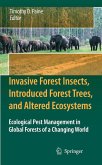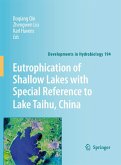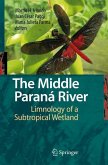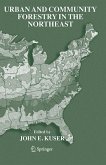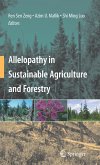Despite their importance in sustaining livelihoods for many people living along some of the world's most populous coastlines, tropical mangrove forests are disappearing at an alarming rate. Occupying a crucial place between land and sea, these tidal ecosystems provide a valuable ecological and economic resource as important nursery grounds and breeding sites for many organisms, and as a renewable source of wood and traditional foods and medicines. Perhaps most importantly, they are accumulation sites for sediment, contaminants, carbon and nutrients, and offer significant protection against coastal erosion.
This book presents a functional overview of mangrove forest ecosystems; how they live and grow at the edge of tropical seas, how they play a critical role along most of the world's tropical coasts, and how their future might look in a world affected by climate change. Such a process-oriented approach is necessary in order to further understand the role of these dynamic forests in ecosystem function, and as a first step towards developing adequate strategies for their conservation and sustainable use and management. The book will provide a valuable resource for researchers in mangrove ecology as well as reference for resource managers.
This book presents a functional overview of mangrove forest ecosystems; how they live and grow at the edge of tropical seas, how they play a critical role along most of the world's tropical coasts, and how their future might look in a world affected by climate change. Such a process-oriented approach is necessary in order to further understand the role of these dynamic forests in ecosystem function, and as a first step towards developing adequate strategies for their conservation and sustainable use and management. The book will provide a valuable resource for researchers in mangrove ecology as well as reference for resource managers.
From the reviews:
"Daniel Alongi ... and colleagues at the Australian Institute of Marine Science have made substantial contribution. The bibliography alone will be of great value to all mangrove researchers. ... I would hope the libraries as well as individuals will purchase this important book, which not only addresses matters of global ecological concern but provides a model for students, whatever their own particular interest, of how to synthesize and assess a formidable and complex amount of information." (Paul Adam, Austral Ecology, Vol. 36 (5), 2011)
"Daniel Alongi ... and colleagues at the Australian Institute of Marine Science have made substantial contribution. The bibliography alone will be of great value to all mangrove researchers. ... I would hope the libraries as well as individuals will purchase this important book, which not only addresses matters of global ecological concern but provides a model for students, whatever their own particular interest, of how to synthesize and assess a formidable and complex amount of information." (Paul Adam, Austral Ecology, Vol. 36 (5), 2011)


